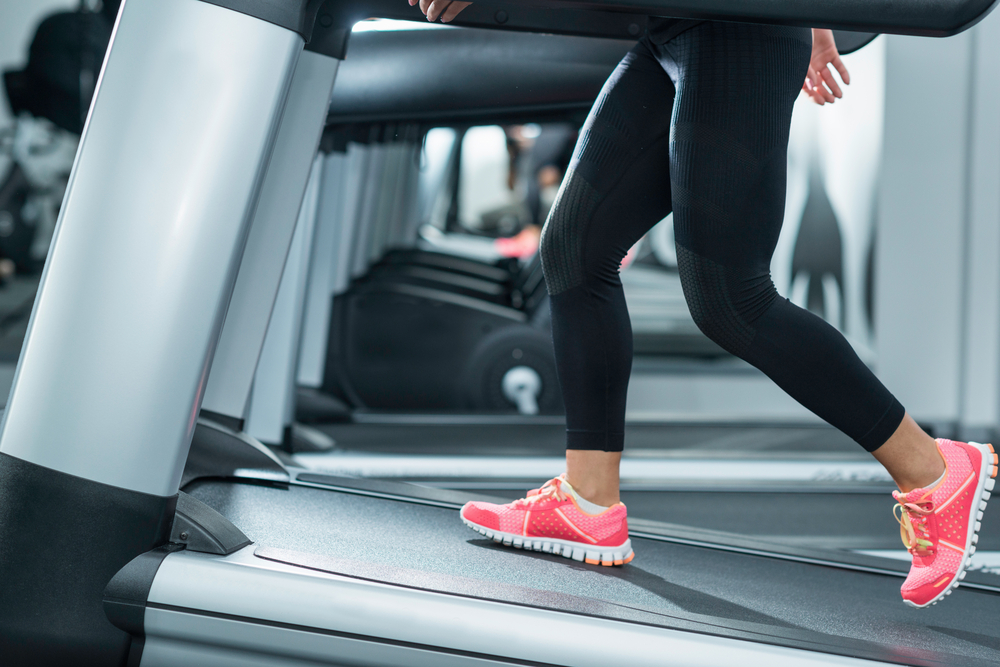
Once you start to become immersed in any sport, you will probably start hearing about various things you should do to train more effectively. Two of the terms most commonly thrown around by running enthusiasts, and other sports that include some kind of running, are fast-twitch muscles and slow-twitch muscles.
But you may not know which muscle type you have and how to use your treadmill to effectively gain more of your preferred type of muscle. To help you pick the right workout focus, we wanted to clarify what these muscle types affect and what kinds of treadmill training you can do to build more of your preferred muscle.
Pick Either Fast-Twitch Or Slow-Twitch Muscle Development
We are all born with a set number of muscle fibers. These fibers are broken into two categories—Type 1 (slow-twitch) and Type 2 (fast-twitch) muscles. Slow-twitch muscles govern efficient oxygenation of your muscles, allowing for extended muscle contraction and effort. Fast-twitch muscles provide you with explosive power over short periods of time, quickly delivering oxygen but are unable to provide long-term endurance.
When it comes to developing either your slow- or fast-twitch muscles, the first thing you should know is that you cannot develop both equally. As they offer opposite benefits, training for one type of muscle will automatically lower the other type. So, depending on your main sport, you will need to choose which to pursue.
Improving Your Fast-Twitch Muscles On A Treadmill
If you are an athlete who relies on speed or strength such as a sprinter, basketball player, short-distance swimmer, running back or powerlifter, you will want to focus your efforts on developing fast-twitch muscles on your treadmill. The kinds of treadmill workouts you should be focusing on are:
- HIIT – High-intensity interval training (HIIT) can pack an explosive punch to your training. Your HIIT workouts should not go over 20-25 minutes; past that threshold, you move into the slow-twitch territory. Stick to short interval cycles such as 200-meter sprints with 8 reps up to 800-meter sprints with 5 reps, while still taking 1-minute to 90-second breaks between intervals. Feel free to mix up what length you are going as long as you don’t exceed the 1000-meter mark, which is pushing it for fast-twitch training.
- Hill Sprints – To build up greater power, hill sprints are top-notch. A quality treadmill that is up to this kind of workout should be able to go up to 15%, which will push your limits. You should go with a similar interval system as your HIIT workouts, but when doing the hill sprints, don’t exceed 800-meter hill sprints. As your body is more taxed by the incline, you want to ensure you are still focused on fast-twitch muscle development.
Using A Treadmill To Develop Slow-Twitch Muscles
For endurance athletes like long-distance runners, cyclists, swimmers, soccer players and other athletes whose chosen sports which require staying power, slow-twitch muscles are king. To ensure that your muscle can sustain long usage, focus on these kinds of treadmill workouts:
- Long intervals – Opposite of what a fast-twitch builder would do, you will need to push yourself on long intervals, with the shortest starting at 400 meters with 10-16 reps, taking only 30-second breaks between intervals. You can also incorporate 1600-meter intervals, though we do recommend 90-second breaks between intervals of this length.
- Heart rate zone training – Many endurance athletes are running too fast on their treadmills for effective slow-twitch muscle building. To do this, you need to calculate your heart rate zones. Once you have determined what your zones are, aim to stay in Zone 2. This pace will likely leave you feeling that you are going too slow, but it is necessary to further develop your slow-twitch muscles.
If you don’t have a treadmill that will hold up under your fast-twitch or slow-twitch muscle building, use our ProForm discount code to save money on a new and more powerful treadmill.
